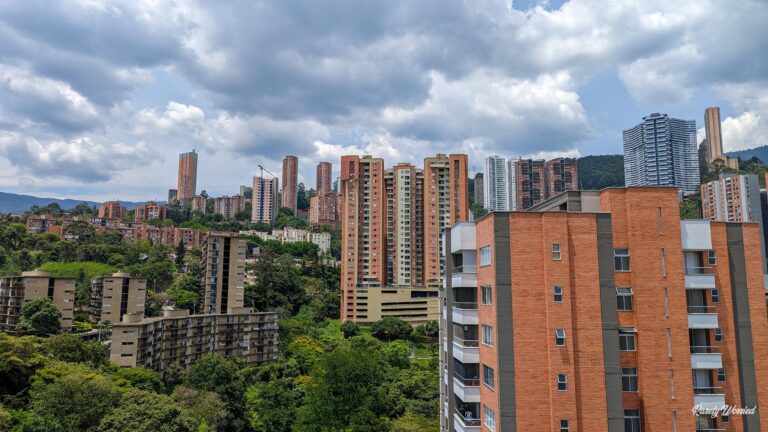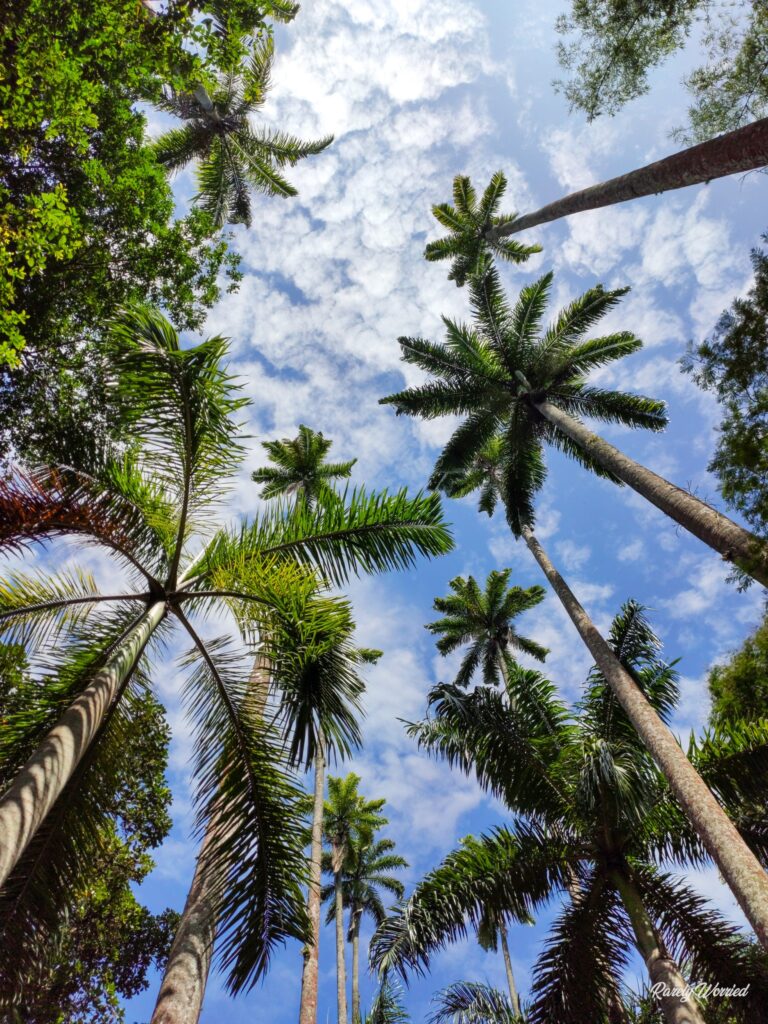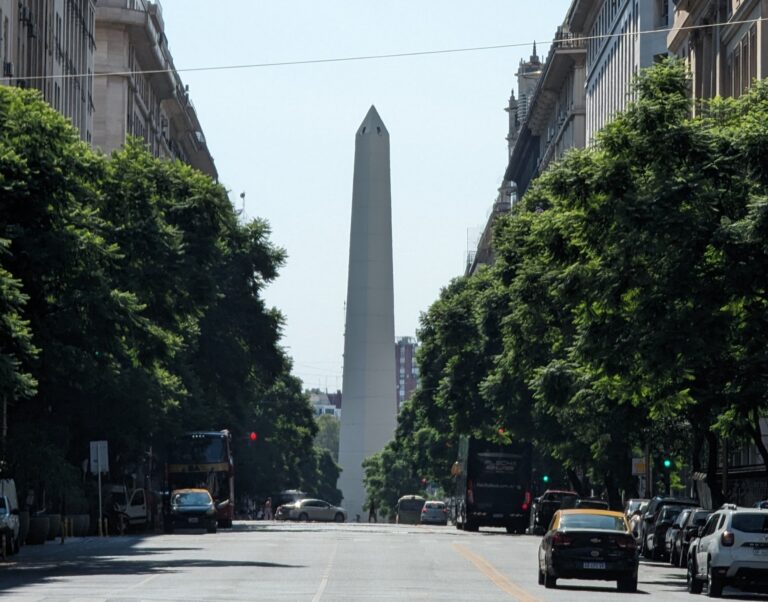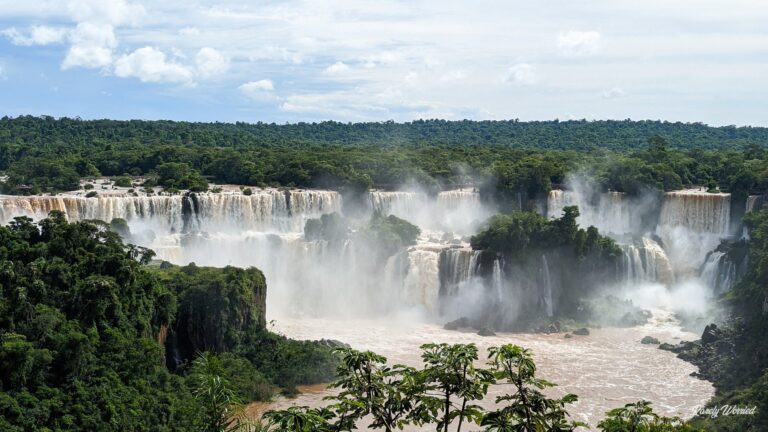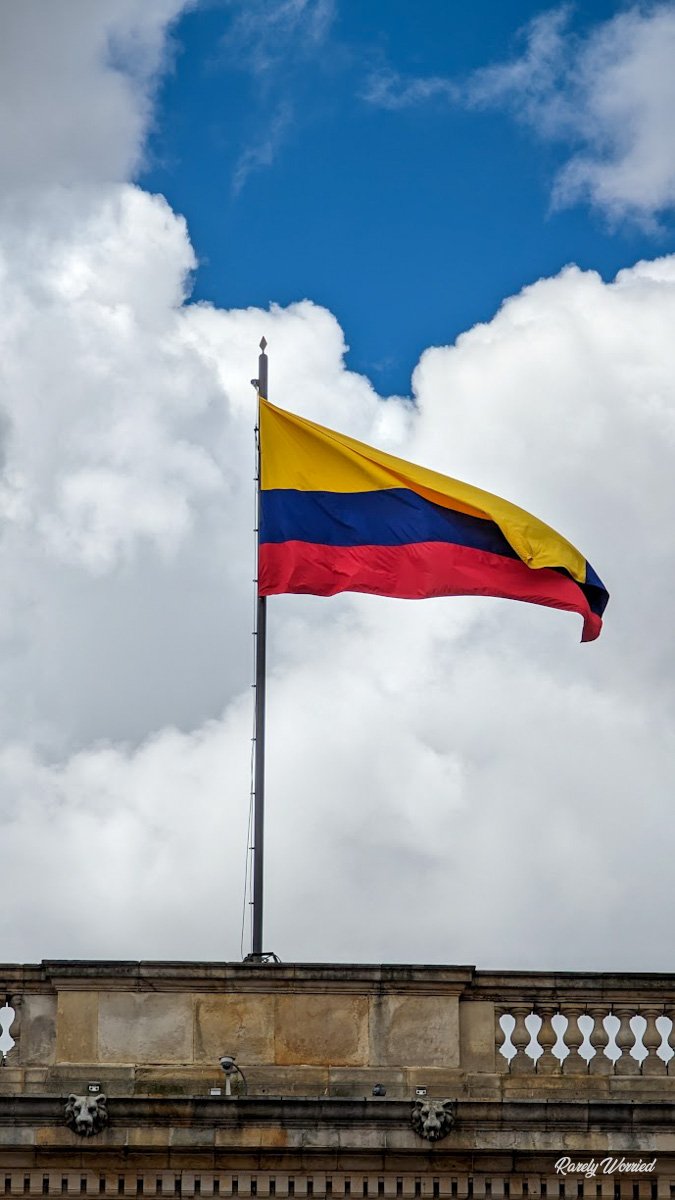The Best Things to do In and Around Rio De Janeiro, Brazil
Rio de Janeiro is one of the most iconic and beautiful cities in the world, and is a must-visit for any trip to Brazil. It’s known around the world for its stunning beaches, vibrant culture, and breathtaking natural landscapes. There is something for everyone to do in Rio, whether you are looking to relax on the beach, explore the city’s history and architecture, or experience the lively nightlife. Follow along as we highlight some of the top things to do in Rio de Janeiro.
Visit Christ the Redeemer
Cristo El Redentor is one of the most iconic landmarks in Rio de Janeiro and is known around the world. Christ the Redeemer is a statue of Jesus Christ that stands 98 feet tall on top of Corcovado Mountain. The statue is a symbol of Brazil’s strong Catholic faith and offers stunning views of the city below. There are three ways to get up to the top of the mountain to experience it for yourself. You can take a train, a van, or you can hike, although I only recommend hiking if you’re in good shape and the weather isn’t too hot. Students get half price, and locals get a discounted rate.
Relax on One of Rio’s Beautiful Beaches
Copacabana Beach is one of the most famous beaches in the world and is a must visit for any trip to Rio De Janeiro. It’s known for its long stretch of golden sand and crystal clear waters and close proximity to the city. Visitors can sunbathe, swim, play volleyball, and enjoy a variety of water sports such as surfing and paddleboarding. There are also many restaurants and bars along the beachfront where you can eat and drink. It’s a great place to have a nice bowl of Acai or a cerveja. Take a walk along the immense boardwalk to Ipanema beach and Leblon beach.
Visit the Selaron Steps
Escadaria Selarón, also known as the Selaron Steps, is a set of colorful tiled steps located in the bohemian neighborhood of Lapa in Rio de Janeiro, Brazil. The steps were created by Chilean artist Jorge Selarón, who spent over 20 years decorating the steps with tiles collected from all over the world.
The steps were originally constructed in the 18th century, but they were in a state of disrepair until Selarón began to renovate them in 1990. Selarón started with a small section of the stairs in front of his house, but his work soon expanded to cover the entire set of steps, which consists of 215 steps and spans 125 meters.
Selarón used a variety of tiles to decorate the steps, including ceramics, porcelain, and glass. The tiles come from over 60 countries, and each one has a unique design or pattern. Selarón worked on the steps continuously for over 20 years until his death in 2013. The steps have since become a popular tourist attraction in Rio de Janeiro and have been featured in several movies, music videos, and advertisements.
The colors and designs of the tiles on the Selaron Steps are constantly changing, as visitors from all over the world leave their own tiles and messages on the steps. The steps have also become a symbol of cultural diversity and unity, as they represent the different cultures and nationalities that have contributed to their creation.
Visit the Museum of Tomorrow
If you’re not interested in museums, that’s understandable. After travelling for such a long period of time, you get too familiarized with different museums around the world and alot of them start to get stale. The Museu do Amanhã, in Portuguese, is different and is definitely somewhere you don’t want to miss this museum exploring humanity’s future challenges & opportunities. If you’re still not interested you may want to at least take a picture of the beautiful architecture. The Museum of Tomorrow was designed by Spanish neofuturistic architect Santiago Calatrava, and built next to the waterfront at Pier Maua, walking distance to Centro.
Visit the Botanical Gardens
The Rio de Janeiro Botanical Garden is one of the most beautiful and diverse botanical gardens in the world. When I first got there I couldn’t believe how tall the palm trees were, and the pictures definitely don’t do it justice. The garden is home to over 6,500 species of plants and also many unique animals, including black capuchin monkeys! You can always take a leisurely stroll through the garden’s winding paths, sit down and relax in the shade of the trees, or visit the garden’s many greenhouses and exhibitions. The entry fee is not too expensive and is definitely worth it.
Experience the Nightlife
Rio de Janeiro is known for its lively nightlife, with a variety of bars, nightclubs, and live music venues to suit all tastes. Whether you visit during Carneval or any other time of the year, you’re bound to find an amazing party. The Lapa neighborhood is very popular for nightlife, with its colorful street art and lively bars and clubs. You can also sit down outside a bar and have a drink. Botafogo is another up and coming neighborhood with many clubs and bars.
At the end of the night make sure to snack on some street food. Yakesoba, Churrasquinha, and fried foods are among the most popular.
Important Note: Be very wary of pickpocketers in Lapa. It is generally safe when in a group of people, but later in the evening as things wind down, take an uber home and be very vigilant of your surroundings.
Take a cable car to Sugarloaf Mountain
Sugarloaf Mountain is another iconic landmark in Rio de Janeiro, offering stunning views of the city and its beaches. You can take a cable car up the mountain to see the views from the top, which are especially beautiful at sunset and another cable car to another section of the mountain. Students get half price discount and locals also get a discount. This is a must-visit for anyone in Rio De Janeiro!
Important Note: Your ticket is valid for one week from the date of purchase. This is good, because if you buy your ticket and see that the weather is bad, you can just come another day to get a better view.
Hike to One of the Many Viewpoints
Mirante Dona Marta
Mirante Dona Marta is a viewpoint located in the Santa Teresa neighborhood of Rio de Janeiro. Visitors can reach the viewpoint by car or by hiking up a steep trail from the neighborhood of Cosme Velho. The viewpoint offers stunning views of the Christ the Redeemer statue and the city skyline.
Mirante do Leblon
Mirante do Leblon is a viewpoint located in the affluent neighborhood of Leblon in Rio de Janeiro. Visitors can reach the viewpoint by hiking up a trail from the neighborhood or by driving up a steep road. The viewpoint offers panoramic views of the coastline and surrounding neighborhoods.
Vista Chinesa
Vista Chinesa is a historic viewpoint located in the Tijuca National Park in Rio de Janeiro. Visitors can reach the viewpoint by driving or hiking up a steep road. The viewpoint offers stunning views of the city and the surrounding mountains, and there is a small café where visitors can stop for refreshments
Pedra da Proa
Another viewpoint and trail just past Vista Chinesa is the Pedra da Proa. This trail is also known as the Pedra Bonita trail, and it leads to a natural viewpoint on the Pedra Bonita mountain that offers panoramic views of the city and coastline.
To reach the Pedra da Proa/Pedra Bonita hiking trail, visitors can take a taxi or bus to the entrance of the Tijuca National Park, which is located on Estrada das Canoas. From there, it is a relatively easy hike of about 2.5 km (1.5 miles) to the viewpoint. The trail is well-marked and takes about 45 minutes to an hour to complete, depending on your fitness level.
Once you reach the top of the Pedra Bonita mountain, you will be rewarded with breathtaking views of the surrounding landscape. The viewpoint offers panoramic vistas of the city, the mountains, and the ocean beyond. It is a popular spot for paragliding, and visitors can often watch paragliders taking off and soaring through the air.
Pedra do Gavea
Located in the Tijuca National Park, Pedra do Gavea is a popular viewpoint that offers stunning views of Rio de Janeiro. The easiest way to reach the viewpoint is by taking a guided tour or hiring a local guide, as the hike to the top can be challenging and takes around 3-4 hours.
Pedra do Telegrafo
Pedra do Telegrafo is another popular viewpoint in Rio de Janeiro, located in the Pedra Branca State Park. To get to the viewpoint, visitors must hike for around 1-2 hours along a trail that offers stunning views of the coast and surrounding mountains. Take a look at my in-depth guide for Pedra Do Telegrafo, a highlight of any trip to Rio De Janeiro.
Dois Irmaos
Dois Irmaos, or “Two Brothers,” is a set of twin peaks located in the Vidigal favela in Rio de Janeiro. Visitors can hike to the top of the peaks for panoramic views of the city and the coastline. The hike takes around 1-2 hours and is moderately challenging.
Buy Havaianas Flip-Flops
Havaianas is a popular Brazilian brand of flip-flop sandals that has become an iconic symbol of Brazilian culture and lifestyle. The brand was created in 1962 by São Paulo-based company Alpargatas, which had previously produced a range of canvas shoes for workers. Although Havaianas has become a global phenomenon, with the brand available in more than 100 countries around the world, you can’t find them cheaper than here in Brazil, and in many different varieties, and some costing less than $10USD. Some locations include gift bags too if you ask, making them the perfect souvenir!
Visit Cabo Frio & Arraial Do Cabo
Cabo Frio and Arraial do Cabo are two popular beach towns located in the state of Rio de Janeiro, Brazil, both of which are known for their beautiful beaches and crystal-clear waters.
Cabo Frio
Cabo Frio is a larger and more developed town, located about 18 miles east of Arraial do Cabo. It offers a range of attractions, including a historic downtown area, shopping centers, and restaurants. The town is also home to several stunning beaches, including:
-
Praia do Forte: This is the main beach in Cabo Frio and is known for its wide expanse of soft sand and clear blue water. The beach is surrounded by rocky cliffs, which offer great views of the coastline.
-
Praia do Peró: Located just a few miles from Cabo Frio, this beach is known for its long stretch of white sand and calm waters, making it a popular spot for swimming and sunbathing.
-
Praia das Conchas: This small, secluded beach is known for its crystal-clear water and beautiful rock formations. It’s a great spot for snorkeling and exploring the underwater world.
Arraial do Cabo
Arraial do Cabo is a smaller and more laid-back town, located about 12 miles east of Cabo Frio. It’s known for its pristine beaches and is a popular destination for diving and snorkeling. Some of the best beaches in Arraial do Cabo include:
-
Praia do Farol: This beach is located on an island just off the coast of Arraial do Cabo and is considered one of the most beautiful beaches in Brazil. The beach has soft white sand and crystal-clear water, making it an ideal spot for swimming and snorkeling.
-
Praia do Forno: This secluded beach is surrounded by rocky cliffs and can only be accessed by boat or by hiking a steep trail. The beach is known for its crystal-clear water and is a great spot for snorkeling and exploring the underwater world.
-
Prainhas do Pontal do Atalaia: This beach is located on a narrow strip of land between the ocean and a lagoon, offering stunning views of the surrounding landscape. The beach is known for its clear water and is a popular spot for swimming and snorkeling.
Did we miss anything? Let us know in the comments and make sure to follow us on social media! Don’t forget to share this with your friends or anyone you think might be interested in this post.




























